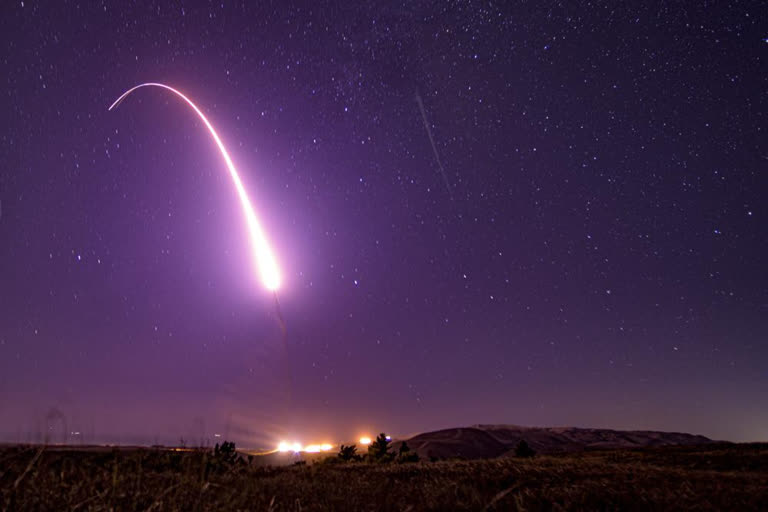Washington:Joe Biden’s arrival in the White House nearly a year ago seemed to herald a historic shift toward less U.S. reliance on nuclear weapons and possibly a shrinking of their numbers. Even an American “no first use” pledge — a promise to never again be the first to use a nuclear weapon — seemed possible.
Then China happened — revelations about its expanding nuclear force and talk of potential war with Taiwan.
And then Russia happened — signs that it might be preparing to invade Ukraine.
Now, major shifts in U.S. nuclear weapons policy seem much less likely, and while Biden may insist on certain adjustments, momentum toward a historic departure from the Trump administration’s policy appears to have stalled.
The outlook will be clearer when the Biden administration completes its so-called nuclear posture review — an internal relook at the numbers, kinds and purposes of weapons in the nuclear arsenal, as well as the policies that govern their potential use. The results could be made public as early as January.
The biggest unknown is how forcefully Biden will weigh in on these questions, based on White House calculations of the political risk. During his years as vice president, Biden talked of new directions in nuclear policy. But heightened concerns about China and Russia would seem to improve the political leverage of Republicans seeking to portray such change as a gift to nuclear adversaries.
Russia became a more urgent focus of Biden’s attention after President Vladimir Putin in recent weeks sent an estimated 100,000 troops to positions near Ukraine’s border and demanded U.S. security guarantees. Biden and Putin discussed Ukraine by phone on Thursday, and senior American and Russian officials are scheduled to follow up with more detailed talks in Geneva on Jan. 9-10.
Tom Z. Collina, policy director at Ploughshares Fund, an advocate for nuclear disarmament, says the China and Russia problems complicate the politics of Biden’s nuclear review but should not stop him from acting to reduce nuclear dangers.
“We do not want a new nuclear arms race with either nation and the only way to prevent that is with diplomacy,” Collina said. “We must remember the main lesson we learned in the Cold War with Russia — the only way to win an arms race is not to run.”
In March, in what the White House called interim national security guidance, Biden said China and Russia had changed “the distribution of power across the world.”
“Both Beijing and Moscow have invested heavily in efforts meant to check U.S. strengths and prevent us from defending our interests and allies around the world,” the guidance said. Biden pledged to counter with actions to strength the United States at home, repair its alliances abroad and elevate the role of diplomacy. Nuclear weapons were mentioned only briefly.
“We will take steps to reduce the role of nuclear weapons in our national security strategy,” the guidance said without offering details, while also ensuring a safe and reliable U.S. nuclear force and seeking arms control opportunities.
Since then, worries about China and Russia have only increased. Private satellite imagery revealed last summer that China was building large numbers of new underground silos for nuclear missiles, and in November a Pentagon report said China may quadruple the size of its nuclear stockpile by 2030.
